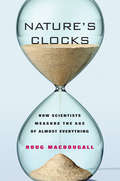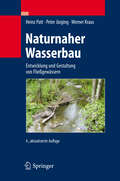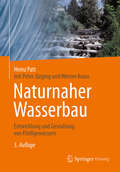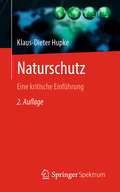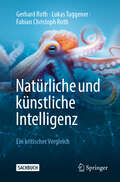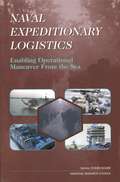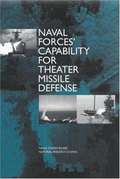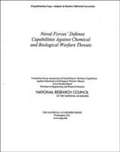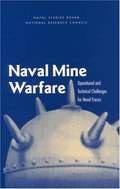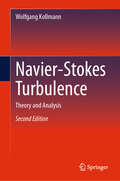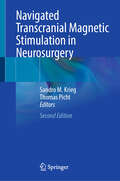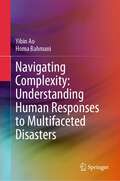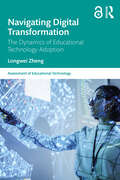- Table View
- List View
Nature’s Biodiversity: The Search, for Beginnings and for Order
by Joseph HellerThis book is about our quest over the centuries, from ancient Greece onwards, for pattern in the rich diversity of life. How did our ancestors think that living creatures first came to be, each fitting so well to its specific environment? Does biodiversity have a purpose? What biodiversity exists, beyond what our eyes can see? Do dragons and unicorns exist? How did the world begin, how did order emerge and were there several Creation events? Reproduction resembles Creation in that order appears out of nothing, form out of matter. Can different reproduction modes increase biodiversity? Why sexual reproduction? Can living creatures, and hence biodiversity, arise from non-living dust? How do embryos develop, from a featureless mass into an orderly, organised living body? Does embryonic development dictate diversity and do species ever go extinct? What is a soul? Do animals have souls? Do souls migrate, between man and animal? Does inheritance of acquired characters create biodiversity? Does diversity form an orderly ladder from plants through animals to Man, or perhaps orderly circles-within-circles? These questions and many others have been central to our culture&’s overall view of nature, from ancient times onwards. This book, presenting the urge to understand overall pattern in the diversity of life throughout history, takes a broad approach. It links theories of classification with those of reproduction, embryology, theology and (eventually) evolution, as they developed from ancient days onwards, over 2400 years. Over 250 illustrations accompany the text, many taken from the ancient, original treatises, many others painted especially for this book, to present specific animals or ideas. This comprehensive view of the study of biodiversity will appeal to zoology lecturers and students, biology teachers and amateur naturalists, as well as to lecturers and learners of history, of theology; and of course, to anybody seeking to broaden horizons.
Nature’s Clocks: How Scientists Measure the Age of Almost Everything
by Doug Macdougall"Radioactivity is like a clock that never needs adjusting," writes Doug Macdougall. "It would be hard to design a more reliable timekeeper." In Nature's Clocks, Macdougall tells how scientists who were seeking to understand the past arrived at the ingenious techniques they now use to determine the age of objects and organisms. By examining radiocarbon (C-14) dating--the best known of these methods--and several other techniques that geologists use to decode the distant past, Macdougall unwraps the last century's advances, explaining how they reveal the age of our fossil ancestors such as "Lucy," the timing of the dinosaurs' extinction, and the precise ages of tiny mineral grains that date from the beginning of the earth's history. In lively and accessible prose, he describes how the science of geochronology has developed and flourished. Relating these advances through the stories of the scientists themselves--James Hutton, William Smith, Arthur Holmes, Ernest Rutherford, Willard Libby, and Clair Patterson--Macdougall shows how they used ingenuity and inspiration to construct one of modern science's most significant accomplishments: a timescale for the earth's evolution and human prehistory.
Naturnaher Wasserbau
by Heinz Patt Peter Jürging Werner KrausDer Autor stellt die wichtigsten Grundlagen für die Planung und Durchführung naturnaher Maßnahmen an Fließgewässern dar. Dabei behandelt er Technik und Ökologie als gleichwertige Partner. Hinweise zur aktuellen rechtlichen Situation, zum Planungsablauf sowie neue Aspekte der Gewässerunterhaltung sind ebenso enthalten wie hydrologische, hydraulische und sedimentologische Grundlagen. Die 4. Auflage berücksichtigt die Neufassungen zahlreicher Gesetze, u. a. des Bundesnaturschutzgesetzes, sowie das seit April 2010 gültige Wasserhaushaltsgesetz.
Naturnaher Wasserbau: Entwicklung und Gestaltung von Fließgewässern
by Heinz PattDer Autor stellt die wichtigsten Grundlagen für die Planung und Durchführung naturnaher Maßnahmen an Fließgewässern dar. Dabei behandelt er Technik und Ökologie als gleichwertige Partner. Hinweise zur aktuellen rechtlichen Situation, zum Planungsablauf sowie neue Aspekte der Gewässerunterhaltung sind ebenso enthalten wie hydrologische, hydraulische und sedimentologische Grundlagen. Die 4. Auflage berücksichtigt die Neufassungen zahlreicher Gesetze, u. a. des Bundesnaturschutzgesetzes, sowie das seit April 2010 gültige Wasserhaushaltsgesetz.
Naturnaher Wasserbau: Entwicklung und Gestaltung von Fließgewässern
by Heinz PattDieses Fachbuch wurde im Hinblick auf die Neufassungen zahlreicher Umweltgesetze aktualisiert. Zu nennen ist insbesondere die Änderung des Wasserhaushaltsgesetz (WHG). Des Weiteren ist der Stand der Arbeiten im Rahmen der Umsetzung der EG-Wasserrahmenrichtlinie fortgeschrieben. Hierbei sind die Erfahrungen mit den Maßnahmenprogrammen dargestellt. Insgesamt wird ein geschlossenes Bild für Planung und Durchführung naturnaher Maßnahmen an unseren Fließgewässern vorgestellt. Umfassende Hinweise zur aktuellen rechtlichen Situation, zum Planungsablauf und auf neue Aspekte bei der Gewässerunterhaltung sind ebenso enthalten wie hydrologische, hydraulische und sedimentologische Grundlagen. Technik und Ökologie sind in diesem Werk über den naturnahen Wasserbau gleichwertige Partner. Es wendet sich in fachübergreifender Blickweise an die in Wasserwirtschafts- und Naturschutzverwaltungen sowie in Planungsbüros tätigen Ingenieure, Landespfleger und Biologen sowie an alle, die für Ausbau und Unterhaltung von Fließgewässern zuständig oder daran interessiert sind.
Naturschutz: Eine kritische Einführung
by Klaus-Dieter HupkeIn Naturschutzgebieten geschieht vieles, das auf den ersten Blick widersprüchlich ist. So werden beim Pflegeeinsatz Blumenwiesen abgemäht, wo doch alle dort wachsenden Pflanzen unter Naturschutz stehen. An anderer Stelle werden im Flachmoor geschützte Schilfbestände abgebrannt oder in einem Dünenschutzgebiet die oberste Bodenschicht mit Planierraupen abgetragen. Wiederum andere Flächen sollen völlig unberührt von menschlichen Eingriffen bleiben. Der Autor Klaus-Dieter Hupke zeigt die verschiedenen Strategien von Naturschutz auf. Er zeigt auch, dass Naturschutz zumeist gerade das nicht ist, was der Begriff im Kern aussagt: „Schutz der Natur“. In Mitteleuropa handelt es sich bei Naturschutzgebieten im Gegenteil überwiegend um die Relikte alter Agrar- und damit Kulturlandschaften. Oftmals stehen auch ästhetische Aspekte eines Landschaftsausschnitts bei der Ausweisung als Naturdenkmal oder Naturschutzgebiet im Vordergrund. Darüber hinaus läuft der Naturschutz Gefahr, zur Ersatzhandlung und zum Alibi für eine in Mitteleuropa wie global immer noch wachsende Zerstörung traditioneller und naturnaher Landschaftssysteme zu werden.Die aktualisierte zweite Auflage bezieht die Folgen des Klimawandels für den Naturschutz nun explizit ein und hat auch an einigen Stellen für die entsprechenden Leser einen stärkeren Bezug auf Österreich sowie auf den zentralalpinen Raum eingearbeitet.
Naturstoffe und Biochemie: Ein Überblick für Chemiker und Biotechnologen (essentials)
by Fabian Ebner Linda Anna Michelle Gehre Claudia TallianDieses essential gibt einen kompakten #65533;berblick #65533;ber die chemischen Grundlagen der Naturstoffe und Biochemie. Es werden ausgew#65533;hlte Stoffklassen mit ihren biologischen und chemischen Funktionen sowie deren Reaktionen und Synthese diskutiert. Die Schwerpunkte liegen hierbei auf den wichtigsten Biomolek#65533;len wie den Kohlenhydraten, den Aminos#65533;uren, den Lipiden, den Terpenen und den Farbstoffen.
Natürliche und künstliche Intelligenz: Ein kritischer Vergleich
by Gerhard Roth Lukas Tuggener Fabian Christoph RothDieses Sachbuch fasst die wissenschaftlichen Grundlagen der natürlichen und künstlichen Intelligenzsysteme zusammen und analysiert ihre Leistungen in einem kritischen Vergleich. Fachkenntnisse sind keine Voraussetzung. Nach einer Einführung in die Intelligenzforschung folgt die Beschreibung menschlicher und tierischer Intelligenz und deren neurobiologischen Grundlagen. Dieser natürlichen Intelligenz wird im Anschluss die künstliche Intelligenz gegenübergestellt, wobei die wichtigsten Grundprinzipien und die Entwicklung hin zu heutigen KI-Systemen betrachtet werden. Dies beinhaltet auch die wichtige Frage, inwiefern KI-Systeme vom Gehirn und dessen Arbeitsweisen lernen können und ob durch das „Nachbauen“ von Nervenzellenverbünden mit den sogenannten neuromorphen Chips vergleichbare Leistungen erreichbar sind oder sein werden. Ein besonderer Fokus liegt auf der kritischen Betrachtung und Einordnung der Fähigkeiten von KI-Systemen in Hinblick auf Denken und Handeln als eine selbstständige Entscheidungsinstanz. Letzteres wirft Fragen hinsichtlich moralischer Entscheidungen und des möglichen Kontrollverlusts über solche Systeme auf, die zurzeit nicht abschließend beantwortet werden können
Naval Analytical Capabilities: Improving Capabilities-based Planning
by National Research Council of the National AcademiesThe National Academies Press (NAP)--publisher for the National Academies--publishes more than 200 books a year offering the most authoritative views, definitive information, and groundbreaking recommendations on a wide range of topics in science, engineering, and health. Our books are unique in that they are authored by the nation's leading experts in every scientific field.
Naval Expeditionary Logistics: Enabling Operational Maneuver From the Sea
by National Research CouncilInformation on Naval Expeditionary Logistics
Naval Forces' Capability For Theater Missile Defense
by Institute of Medicien National Academy of Science National Academy of EnegineeringA report on the Naval Forces' Capability For Theater Missile Defense
Naval Forces' Defense Capabilities Against Chemical and Biological Warfare Threats
by Committee for an Assessment of Naval Forces' Defense Capabilities Against Chemical Biological Warfare ThreatsThis book reviews a draft report from the federal government that assesses the effects of oxygenated gasoline on public health, air quality, fuel economy, engine performance, and water quality. In addition to evaluating the scientific basis of the report, the book identifies research needed to better understand the impacts of oxygenated fuels. Methyl tertiary-butyl ether (MTBE), which is intended to reduce carbon monoxide pollution during winter, is the most commonly used additive in the federal oxygenated fuels program. MTBE has been implicated in complaints by the public of headaches, coughs, and nausea. Other questions have been raised about reduced fuel economy and engine performance and pollution of ground water due to the use of MTBE in gasoline. The book provides conclusions and recommendations about each major topic addressed in the government's report.
Naval Mine Warfare: Operational and Technical Challenges for Naval Forces
by Committee for Mine Warfare AssessmentA report on the Operational and Technical Challenges for Naval Forces
Navier-Stokes Turbulence: Theory and Analysis
by Wolfgang KollmannThe book serves as a core text for graduate courses in advanced fluid mechanics and applied science. It consists of two parts. The first provides an introduction and general theory of fully developed turbulence, where treatment of turbulence is based on the linear functional equation derived by E. Hopf governing the characteristic functional that determines the statistical properties of a turbulent flow. In this section, Professor Kollmann explains how the theory is built on divergence free Schauder bases for the phase space of the turbulent flow and the space of argument vector fields for the characteristic functional. Subsequent chapters are devoted to mapping methods, homogeneous turbulence based upon the hypotheses of Kolmogorov and Onsager, intermittency, structural features of turbulent shear flows and their recognition.
Navier-Stokes Turbulence: Theory and Analysis
by Wolfgang KollmannThis updated/augmented second edition retains it class-tested content and pedagogy as a core text for graduate courses in advanced fluid mechanics and applied science. The new edition adds revised sections, clarification, problems, and chapter extensions including a rewritten section on Schauder bases for turbulent pipe flow, coverage of Cantwell’s mixing length closure for turbulent pipe flow, and a section on the variational Hessian. Consisting of two parts, the first provides an introduction and general theory of fully developed turbulence, where treatment of turbulence is based on the linear functional equation derived by E. Hopf governing the characteristic functional that determines the statistical properties of a turbulent flow. In this section, Professor Kollmann explains how the theory is built on divergence free Schauder bases for the phase space of the turbulent flow and the space of argument vector fields for the characteristic functional. The second segment, presented over subsequent chapters, is devoted to mapping methods, homogeneous turbulence based upon the hypotheses of Kolmogorov and Onsager, intermittency, structural features of turbulent shear flows and their recognition.
Navier-Stokes-Fourier Equations
by Radyadour Kh. ZeytounianThis research monograph deals with a modeling theory of the system of Navier-Stokes-Fourier equations for a Newtonian fluid governing a compressible viscous and heat conducting flows. The main objective is threefold. First , to 'deconstruct' this Navier-Stokes-Fourier system in order to unify the puzzle of the various partial simplified approximate models used in Newtonian Classical Fluid Dynamics and this, first facet, have obviously a challenging approach and a very important pedagogic impact on the university education. The second facet of the main objective is to outline a rational consistent asymptotic/mathematical theory of the of fluid flows modeling on the basis of a typical Navier-Stokes-Fourier initial and boundary value problem. The third facet is devoted to an illustration of our rational asymptotic/mathematical modeling theory for various technological and geophysical stiff problems from: aerodynamics, thermal and thermocapillary convections and also meteofluid dynamics.
Navies in the 21st Century
by Conrad Waters&“A range of naval experts . . . build[s] a diverse and deeply-thought out picture of where maritime warfare is now and where it is likely to go.&”—Army Rumour Service What is the purpose of navies in the modern world, and what types of warship does this require? This book tackles these questions by looking at naval developments, both technological and operational, in the quarter century since the end of the Cold War. It provides the overall political and economic context, assesses significant naval operations from the first Gulf War to Russia&’s annexation of Crimea, reviews changes in the objectives and composition of the principal fleets, describes major design developments amongst the main warship types, and examines wider technological and operational developments, including naval aviation, shipbuilding and manning. &“A high quality publication with a great many superb photographs. For those wishing to keep fully informed on world naval affairs, it is excellent value and strongly recommended.&”—Scuttlebutt &“This new book follows the successful approach and format of the very popular naval annual Seaforth&’s World Naval Review. Under the same editor, a new team of specialists have been assembled to write authoritative articles in their particular fields of expertise. The absorbing text is fully supported by many outstanding images—Most Recommended.&”—Firetrench &“Provides a most useful contextual analysis of the post-Cold War period, explaining how technological developments and a range of world events have variously shaped the fleets of today.&”—Warship
Navigated Transcranial Magnetic Stimulation in Neurosurgery
by Sandro M. Krieg Thomas PichtBuilding on the foundation of the first edition, this thoroughly updated volume reflects the rapid advancements and expanding clinical relevance of navigated transcranial magnetic stimulation (nTMS) in neurosurgery. Once primarily a tool for preoperative mapping of cortical motor and language functions, nTMS is now increasingly recognized as a versatile instrument for individualized neurosurgical planning, risk stratification, and targeted neuromodulation. This second edition presents these principles of perioperative neurophysiology with new insights into the integration of nTMS with cutting-edge technologies such as advanced tractography and connectomic analyses offering a more nuanced view of brain networks and their role in both mapping and therapeutic contexts. Emerging applications—such as closed-loop stimulation and post-spinal cord injury rehabilitation—are covered in depth, reflecting the field&’s shift toward personalized neuromodulatory interventions. As in the first edition, the book serves both as a practical guide and a reference: neurosurgeons and neuroscientists new to nTMS will find essential protocols and implementation strategies, while experienced users will benefit from expert analysis of the latest techniques and clinical applications. Each chapter is authored by leading figures in the field, selected for their pioneering contributions and international expertise. With a spirit of collaboration and innovation at its core, this book captures the momentum and promise of nTMS in modern neurosurgery—moving from isolated functional regions to a network-based approach that is transforming patient care.
Navigating Challenges for Sustainable Growth: Insights from the Indian G20 Presidency
by Suman Bery Kapil Kapoor Jean-Louis ArcandThe open access volume stems from a conference held during the Indian G20 Presidency in New Delhi on 28-29 July 2023, featuring 40 leading experts from 14 countries across the world. It addresses issues, such as climate adaptation, global health, technology, and financial investments. It discusses India's transition to net-zero emissions, the dynamics of technological disruptions, the shift towards a unified digital economy, and the transformations in the global economy. It critically analyzes the global financial architecture, the evolving nature of capital and the job market, and the complex interplay between economics, politics, and global health. It also discusses the uneven progress in international development, focusing on Africa's unique challenges and potentials. With expert contributions across sectors, including policy, academia, and industry, the volume provides cross-cutting insights that resonate with multiple stakeholders and offer pragmatic agendas for a sustainable future. This book stands as a crucial resource for anyone keen on understanding or influencing sustainable growth on a global scale.
Navigating Complexity in Big History: Exploring Periodization Across Cosmic and Biosocial Dimensions (World-Systems Evolution and Global Futures)
by Leonid Grinin Andrey Korotayev David J. LePoireThis book explores periodization in Big History against the background of complexity growth across the Universe, on our planet, and in biological, social, and cultural systems. It traces the accelerating rise in complexity throughout history and the major historical transformations involved in the evolution of life, humans, and civilization. It draws on concepts from physics and evolutionary biology to offer potential models of the underlying mechanisms driving this acceleration, along with potential clues to how it might end. In the editors&’ introduction (Chapter 1), the effort to periodize is placed within the historical context along with considerations from complexity science. Subsequent chapters explore various aspects of periodization and complexity by (a) identifying symmetrical cosmic and biosocial trends, (b) testing rigor and criteria for evaluating periodization, (c) attempting to integrate different approaches through multiple perspectives, (d) proposing different strategies for determining geometric patterns in terrestrial bio-social evolution, and (e) applying the traditional threshold model to gain insights into possible future pathways. A concluding chapter identifies commonalities, research gaps, and possible approaches to integration as the current state of the world system rapidly evolves, while also offering a deeper understanding of complexity dynamics and historical processes. Each chapter includes an extensive bibliography, allowing a deeper and more detailed examination of the issues covered.
Navigating Complexity: Understanding Human Responses to Multifaceted Disasters
by Yibin Ao Homa BahmaniThis thought-provoking book unravels the intricate interplay between human behavior and disasters, weaving a rich narrative that transcends traditional boundaries. Embark on a captivating exploration of human responses to multifaceted disasters with this book. Unveiling the human psyche and the intricate web of emotions that intertwine with disaster events, this book offers a profound understanding of human responses to multifaceted disasters.Written with precision and meticulous research, this book captivates scholars, practitioners, and policymakers alike. Its multidimensional perspectives offer valuable insights for disaster management, urban planning, sociology, and public health, transcending disciplinary boundaries.
Navigating Digital Transformation: The Dynamics of Educational Technology Adoption (Assessment of Educational Technology)
by Longwei ZhengThis book explores the process of educators’ technology adoption, which is crucial for digital transformation in today's educational landscape. It is based on rigorous research which highlights the dynamics of technology adoption, the evolution of institutional culture, and the development of digital artifacts as educators navigate the incorporation of educational technology. Through a thorough analysis of the complex factors influencing technology adoption, the book seeks to bridge theory and practice, technology and teaching methods, policy, and execution, to promote more effective and meaningful educational innovation and transformation.This book confronts the challenges within this field by illustrating the development process of teachers' technology adoption. It introduces novel representations and analytics of technology adoption dynamics, offering new insights into the mechanisms behind teachers' technological understanding beyond mere self-reported acceptance. Through a thorough analysis of the complex factors influencing technology adoption, the book seeks to bridge theory and practice, technology and teaching methods, policy, and execution, to promote more effective and meaningful educational innovation and transformation. To study the short- and long-term effects that may improve the assessment of interventions, the author proposes a dynamic model. The reader is also introduced to a framework based on a downscaling scheme that can project cultural factors of the institution onto a teacher’s implementation behaviour. The book further considers navigating through technological integration by inspecting technology-related quality of teaching artifacts. It considers patterns of integrating digital tools and teaching practice that can be identified by examining the technology-specific quality of digital artifacts shaped by teachers.This book targets several key groups in the education sector, including educators, researchers, policymakers, and educational technology professionals. The author shares the knowledge to support the integration of technology and transformation in education by providing interdisciplinary perspectives and practical strategies.

